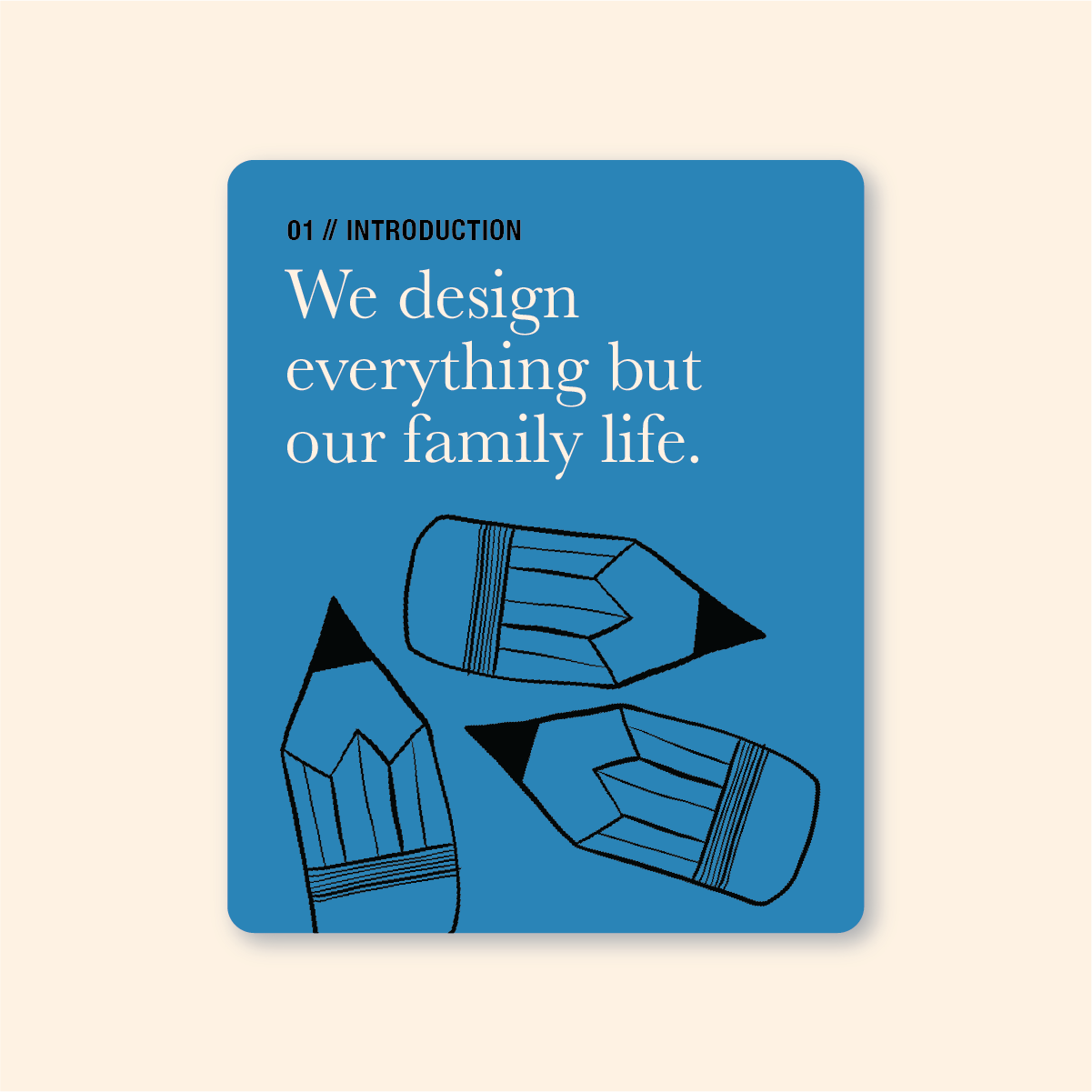We Design Everything but Our Family Life
Human-centered design, widely used to shape systems and businesses, can also help families build stronger, more connected relationships at home.
Design, at its core, is simply the act of moving from what is, to what could be, with intention. And if there’s any part of life that deserves more intention today, it’s our home. It is where we shape how we experience one another, not just through what is visible, but what we deeply feel.
When I talk about design here, I mean human-centered design. It is a problem solving approach that puts people’s needs and experiences at the center. For decades, designers have worked with businesses, governments and organisations to create value and deliver results with this method.
While the world has been so busy designing everything around us, whether it truly benefits us depends entirely on the intent behind it.
But yet most of us have never learned how to design our own family life, putting the people we love most in the center. We all want the best for our families, but do we know how to design a culture that helps us thrive as humans and strengthen the relationships that truly matter to us?
Most of us agree that family is the most important thing. Yet when it comes to raising kids and managing daily chaos, we often default to what we know from our own childhood, or patch random tips and hacks from social media. Small daily habits add up and we wonder why everyone feels disconnected.
“You don’t have to get it all right, in fact it’s not quite possible, even as a professional designer trying to do this at home. “
The great thing about the human-centered approach is that it forgives our flaws and embraces our humanity. With some knowledge, the right mindset, and a few simple tools to use in different situations, as long as we are focused on connection, we will move towards a better direction.
That’s what this work here is about. To help families learn and apply the principles that drive human-centered innovation at work, but applied where it matters most, at home, with the people we love.



